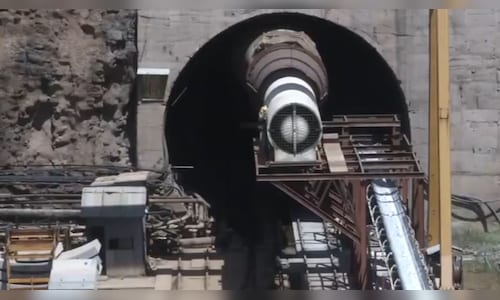The tunnel’s conveyor belt, which had sustained damage during the collapse on Saturday, February 22, has been successfully repaired and is now operational. This has significantly aided rescue teams in clearing debris, facilitating a more efficient excavation process, officials stated, reported PTI.
Read more: Telangana tunnel collapse day 11: Rescue op underway, damaged conveyor likely to be operational
Additionally, rescue personnel are drilling at various locations within the tunnel, guided by input from scientists at the National Geophysical Research Institute (NGRI) in Hyderabad. The experts are employing Ground Penetrating Radar (GPR) technology to detect potential signs of human presence within the structure.
Despite persistent efforts, the complex conditions within the tunnel – characterised by accumulated muck and water – continue to pose significant challenges for the rescue teams. Earlier inspections conducted at other locations identified through scientific analysis yielded no confirmed indications of human presence, authorities noted.
On March 4, officials confirmed that specialists from the National Centre for seismology (NCS) in Delhi had joined the ongoing rescue mission. Their role involves conducting seismological studies within the tunnel to assist in the operation.
Read more: SLBC tunnel collapse: Location of persons trapped inside not known yet, says Telangana CM
Furthermore, the last remaining sections of the Tunnel Boring Machine 9TBM are set to be extracted using a gas cutter and transported out via a loco train, as per the officials overseeing the operation.
The incident, which has left eight engineers and labourers trapped inside the SLBC tunnel since February 22, has mobilised multiple agencies, including teams from the National Disaster Response Force (NDRF), the Indian army, and the Navy. These personnel, along with other expert groups, are continuing their relentless efforts to safely bring out the trapped individuals.
(With inputs from PTI)


